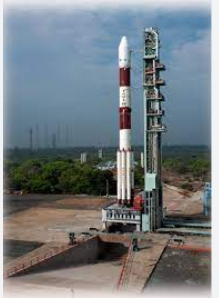Polar Satellite Launch Vehicle (PSLV)
The Polar Satellite Launch Vehicle (PSLV) is an expendable medium-lift launch vehicle designed and operated by the Indian Space Research Organisation (ISRO). It is the first Indian launch vehicle to be equipped with liquid stages and has emerged as the workhorse of ISRO, with numerous successful missions to its credit. The PSLV is primarily used to launch satellites into polar and low Earth orbits, and has also been used for interplanetary missions.
Development
The development of PSLV began in the early 1990s, with the objective of creating a reliable and cost-effective launch vehicle for India’s growing space program. The project was initiated by ISRO’s Vikram Sarabhai Space Centre (VSSC) in Thiruvananthapuram, Kerala. The first PSLV flight, PSLV-D1, took place on September 20, 1993, successfully launching the IRS-1E satellite.
Vehicle Configuration
The PSLV has a four-stage configuration, with alternating solid and liquid stages:
- First stage: The first stage, PS1, is powered by a solid rocket motor and augmented by six strap-on solid rocket boosters.
- Second stage: The second stage, PS2, is powered by a Vikas liquid rocket engine, which uses unsymmetrical dimethylhydrazine (UDMH) as fuel and nitrogen tetroxide (N2O4) as an oxidizer.
- Third stage: The third stage, PS3, is a solid rocket motor.
- Fourth stage: The fourth stage, PS4, is powered by two liquid engines, one for propulsion and the other for attitude control.
The PSLV has three variants:
- PSLV-G (Generic): The standard configuration with six strap-on boosters.
- PSLV-CA (Core Alone): A configuration without the strap-on boosters, used for launching lighter payloads.
- PSLV-XL (Extended Length): A configuration with extended strap-on boosters, used for launching heavier payloads.
Notable Missions
The PSLV has been used for numerous successful missions, launching satellites for various applications such as Earth observation, communication, and navigation. Some of the notable missions include:
- Chandrayaan-1 (2008): India’s first lunar exploration mission, which included an orbiter and an impactor.
- Mars Orbiter Mission (Mangalyaan) (2013): India’s first interplanetary mission, which made India the first country to successfully reach Mars on its first attempt.
- NavIC (2013-2018): A series of launches to deploy the Indian Regional Navigation Satellite System (IRNSS), now known as NavIC (Navigation with Indian Constellation).
- Record-breaking launch (2017): PSLV-C37 successfully launched 104 satellites in a single mission, setting a new world record.
International Collaborations
The PSLV has also been used to launch satellites for international customers, demonstrating India’s growing capabilities in the global space market. Some of the countries that have used PSLV services include the United States, Canada, Germany, France, and Singapore. In 2015, ISRO successfully launched six Singaporean satellites using the PSLV-C29 mission.
Future Developments
ISRO continues to improve and upgrade the PSLV to meet the growing demands of the space industry. Some of the planned developments include:
- Increasing the payload capacity of the PSLV-XL variant to 2,000 kg for geostationary transfer orbit (GTO) missions.
- Developing a reusable version of the PSLV, with a winged first stage that can be recovered and reused.
- Enhancing the reliability and cost-effectiveness of the PSLV through the use of advanced technologies and manufacturing processes.
The Polar Satellite Launch Vehicle (PSLV) has been a game-changer for India’s space program, providing a reliable and cost-effective means of launching satellites into Earth orbit and beyond. With its impressive track record and ongoing developments, the PSLV is set to play a crucial role in India’s future space endeavors, as well as in the global space market.


